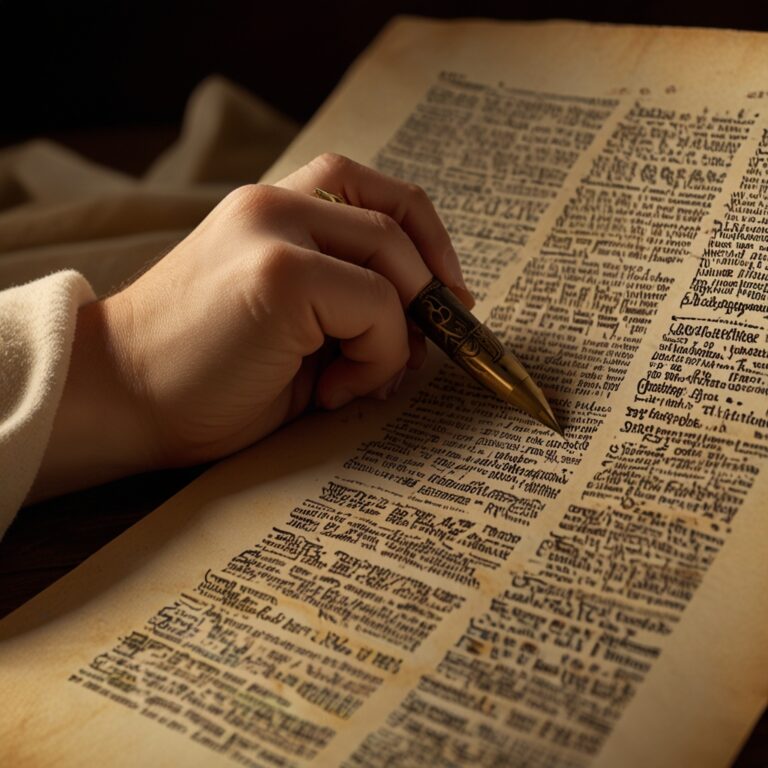
The final segment of this chapter declares redemption and judgment, depicted in two metaphors found often throughout the Testaments: (1) the harvest and (2) the wine press.
| Chapter 14 14 I looked, and there before me was a white cloud, and seated on the cloud was one like a son of man with a crown of gold on his head and a sharp sickle in his hand. 15 Then another angel came out of the temple and called in a loud voice to him who was sitting on the cloud, “Take your sickle and reap, because the time to reap has come, for the harvest of the earth is ripe.” 16 So he who was seated on the cloud swung his sickle over the earth, and the earth was harvested. 17 Another angel came out of the temple in heaven, and he too had a sharp sickle. 18 Still another angel, who had charge of the fire, came from the altar and called in a loud voice to him who had the sharp sickle, “Take your sharp sickle and gather the clusters of grapes from the earth’s vine, because its grapes are ripe.” 19 The angel swung his sickle on the earth, gathered its grapes and threw them into the great winepress of God’s wrath. 20 They were trampled in the winepress outside the city, and blood flowed out of the press, rising as high as the horses’ bridles for a distance of 1,600 stadia. |
(*All Bible verses are from the NIV unless otherwise noted)
Rev 14:14
I looked, and there before me was a white cloud, and seated on the cloud was one like a son of man with a golden crown on his head and a sharp sickle in his hand:
Other prophets had similar visions:
Dan 7:13 “In my vision at night I looked, and there before me was one like a son of man, coming with the clouds of heaven. He approached the Ancient of Days and was led into his presence. 14 He was given authority, glory and sovereign power; all nations and peoples of every language worshiped him. His dominion is an everlasting dominion that will not pass away, and his kingdom is one that will never be destroyed.
Ezek 1:26 Above the vault over their heads was what looked like a throne of lapis lazuli, and high above on the throne was a figure like that of a man. 28 Like the appearance of a rainbow in the clouds on a rainy day, so was the radiance around him. This was the appearance of the likeness of the glory of the LORD. When I saw it, I fell face-down, and I heard the voice of one speaking.
Rev 10:1 Then I saw another mighty angel coming down from heaven. He was robed in a cloud, with a rainbow above his head; his face was like the sun, and his legs were like fiery pillars.
The symbols of the crown and rainbow seem to identify this “son of man” as Christ.
Rev 14:15
Then another angel came out of the temple and called in a loud voice to him who was sitting on the cloud, “Take your sickle and reap, because the time to reap has come, for the harvest of the earth is ripe”:
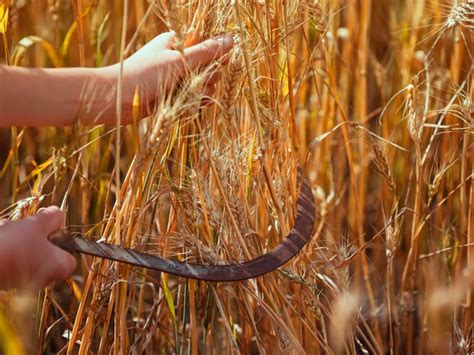
The symbolism of “reaping the harvest” not only depicts a season when crops are gathered from the fields but also serves as a metaphor for “harvesting” souls. The ripe and healthy wheat represents those who have been redeemed by Christ.
Isa 17:5 It will be as when reapers harvest the standing grain, gathering the grain in their arms— as when someone gleans heads of
grain in the Valley of Rephaim. 6 Yet some gleanings will remain, as when an olive tree is beaten, leaving two or three olives on the topmost branches, four or five on thefruitful boughs,” declares the LORD, the God of Israel. 7 In that day people will look to their Maker and turn their eyes to the Holy One of Israel.
The weeds and the harvested grapes represent those who have refused Christ and rebelled against God. They will face a time of judgment as they appear before the Father:
Jer 51:33 This is what the LORD Almighty, the God of Israel, says: “Daughter Babylon is like a threshing floor at the time it is trampled; the time to harvest her will soon come.”
Matt 13:24 Jesus told them another parable: “The kingdom of heaven is like a man who sowed good seed in his field. 25 But while everyone was sleeping, his enemy came and sowed weeds among the wheat, and went away. 26 When the wheat sprouted and formed heads, then the weeds also appeared. 27 “The owner’s servants came to him and said, ‘Sir, didn’t you sow good seed in your field? Where then did the weeds come from?’ 28 “ ‘An enemy did this,’ he replied.“The servants asked him, ‘Do you want us to go and pull them up?’ 29 “ ‘No,’ he answered, ‘because while you are pulling the weeds, you may uproot the wheat with them. 30 Let both grow together until the harvest. At that time, I will tell the harvesters: First collect the weeds and tie them in bundles to be burned; then gather the wheat and bring it into my barn.’ ”
Rev 14:16
So he who was seated on the cloud swung his sickle over the earth, and the earth was harvested:
The noun therismos (the harvest) and the verb therizo (to harvest or cut down)1 have been used in reference to harvesting ripe crops. Consider ancient Israel and the excitement that spread through communities as they came together for the new harvest, celebrating with feasting and solemn ceremonies to present the first and finest of the harvest to God – the omer offering.
The omer offering (korban Ha’ omer), or the sheaf offering, was made by the priests of Israel in the Temple. The offering comprised one ‘omer (approximately 2.2 liters or .6 gallons) of freshly harvested grain, which was waved in the Temple. It was forbidden to consume any new grains until this offering was made.2
Lev 23:9 The LORD said to Moses, 10 “Speak to the Israelites and say to them: ‘When you enter the land I am going to give you and you reap its harvest, bring to the priest a sheaf of the first grain you harvest. 11 He is to wave the sheaf before the LORD so it will be accepted on your behalf; the priest is to wave it on the day after the Sabbath.
This initial harvest by “one like a son of man” gathers the faithful. They are spared from the judgment that awaits those who reject God.
Rev 14:17
Another angel came out of the temple in heaven, and he too had a sharp sickle
Now, John sees a different angel who is also prepared to harvest. This harvest symbolizes one of judgment;
Rev 14:8 A second angel followed and said, “ ‘Fallen! Fallen is Babylon the Great,’ which made all the nations drink the maddening wine of her adulteries.”
Rev 14:18
Still another angel, who had charge of the fire, came from the altar and called in a loud voice to him who had the sharp sickle, “Take your sharp sickle and gather the clusters of grapes from the earth’s vine, because its grapes are ripe.”
The “altar” was the seat of mercy depicted as the place of safety for the redeemed of God:
Rev 6:9 When he opened the fifth seal, I saw under the altar the souls of those who had been slain because of the word of God and the testimony they had maintained. 10 They called out in a loud voice, “How long, Sovereign Lord, holy and true, until you judge the inhabitants of the earth and avenge our blood?” 11 Then each of them was given a white robe, and they were told to wait a little longer, until the full number of their fellow servants, their brothers and sisters, were killed just as they had been.
This angel appears at the end of the trumpet section, coming from the altar where the saints have rested for a season. These children of God have been crying out for justice!
Isaiah 5:7 The vineyard of the LORD Almightyis the nation of Israel,and the people of Judahare the vines he delighted in.And he looked for justice, but saw bloodshed;for righteousness, but heard cries of distress.
These angels are preparing to gather in the “grapes,” symbolic of those who deny God and refuse to accept His Gospel of peace.
Joel 3:13 Swing the sickle,for the harvest is ripe.Come, trample the grapes,for the winepress is full, and the vats overflow—so great is their wickedness!”
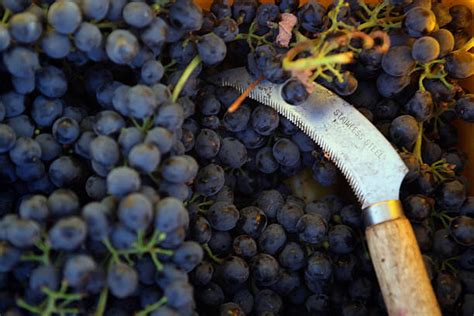
Rev 14:19
The angel swung his sickle on the earth, gathered its grapes and threw them into the great winepress of God’s wrath:
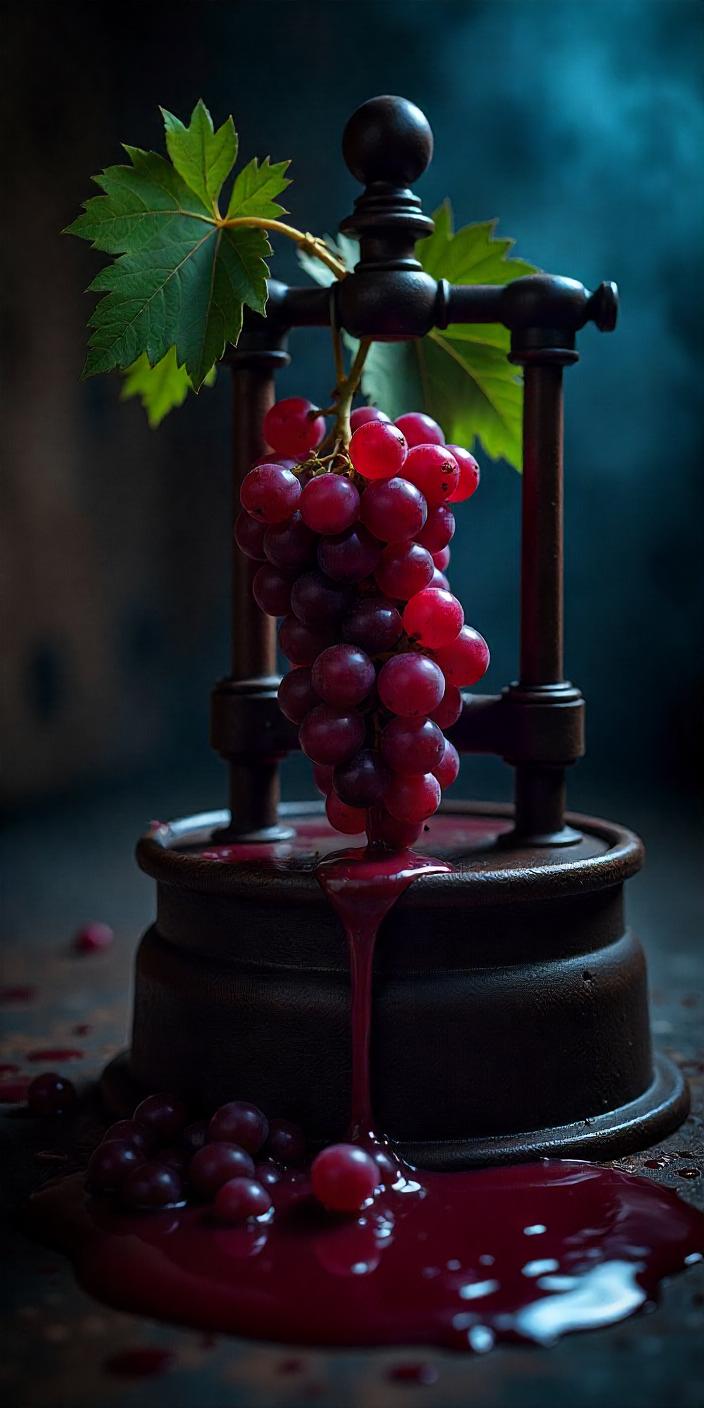
A winepress is a device that extracts juice from crushed grapes during wine making. The image of the great winepress of the wrath of God is drawn from Isaiah:
Isa 63:2 Why are your garments red,like those of one treading the winepress? 3 “I have trodden the winepress alone;from the nations, no one was with me.I trampled them in my angerand trod them down in my wrath;their blood spattered my garments,and I stained all my clothing. 4 It was for me the day of vengeance;the year for me to redeem had come.
In John’s vision, the Lord is seen in a white robe stained with the blood of his enemies. The metaphor of Israel as a grapevine is used throughout the Old Testament:
Isa 5:1 I will sing for the one I love a song about his vineyard: My loved one had a vineyard on a fertile hillside. 2 He dug it up and cleared it of stones and planted it with the choicest vines. He built a watchtower in it and cut out a winepress aswell. Then he looked for a crop of good grapes, but it yielded only bad fruit. 3 “Now you dwellers in Jerusalem and people of Judah, judge between me and my vineyard. 4 What more could have been done for my vineyard than I have done for it? When I looked for good grapes, why did it yield only bad? 5 Now I will tell you what I am going to do to my vineyard: I will take away its hedge, and it will be destroyed; I will break down its wall, and it will be trampled. 6 I will make it a wasteland, neither pruned nor cultivated, and briers and thorns will grow there. I will command the clouds not to rain on it.” 7 The vineyard of the LORD Almighty is the nation of Israel, and the people of Judah are the vines he delighted in. And he looked for justice, but saw bloodshed; for righteousness, but heard cries of distress.
Rev 14:20
And the winepress was trodden outside the city:
The concept of a final judgment taking place outside Jerusalem can be found in Jewish, Muslim, and Christian traditions that refer to Joel’s prophecy:
Joel 3:12 “Let the nations be roused;let them advance into the Valley of Jehoshaphat, for there I will sit to judge all the nations on every side.
The Hebrew word jehoshaphat means Yahweh Judges3. King Jehoshaphat was the fourth king of Judah (1 Kings 15:24) and reigned for 25 years (from 873 to 848 BC). During Jehoshaphat’s reign, the Lord delivered Judah and Jerusalem from the combined forces of Ammon, Moab, and the mountain people of Seir, causing the enemy forces to become confused and destroy each other (2 Ch 20:1-29).
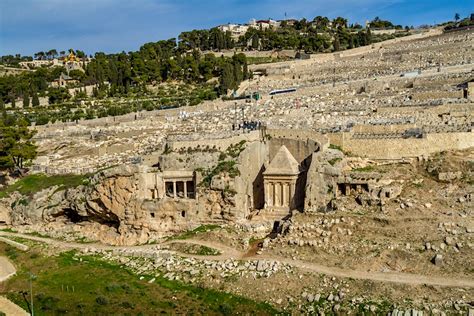
The Valley of Jehoshaphat is known as the place of final judgment in the Biblical tradition, evidenced by the extensive cemeteries of all three faiths on its slopes.
Eusebius identifies the valley as the Valley of Hinnom, and Jerome refers to the Kidron Valley, citing Joel as a reference.4
The valley’s symbolic significance is perhaps more important than its geographical location. It represents an assurance of God’s righteous judgment on His enemies and the salvation of His people.
Heb 13:11 The high priest carries the blood of animals into the Most Holy Place as a sin offering, but the bodies are burned outside the camp. 12 And so Jesus also suffered outside the city gate to make the people holy through his own blood. 13 Let us, then, go to him outside the camp, bearing the disgrace he bore. 14 For here we do not have an enduring city, but we are looking for the city that is to come.
Following the pattern of parallelism, these events are the fourth time John has been shown what appears to be the final battle or judgment (Rev 6:15-17, 7:9-12, 11:15-19, 14:19-12), and there will be a fifth (19:6-8).
Rev 14:20
And blood flowed as high as a horse’s bridle, for 1,600 stadia:
According to the ancient historian Herodotus, one stadion was equal to 600 Greek feet5. The exact length of the stadion has been debated for hundreds of years, but many scholars agree that it represents about 157.7 meters (172.5 yds), or about 160 miles.
The wine press symbolizes the wrath of God and the final outcome of the evil of the world. Matthew Henry writes, “The patience of God towards sinners, is the greatest miracle in the world; but, though lasting, it will not be everlasting; and ripeness in sin is a sure proof of judgment at hand.”6
*All Scripture quotations, unless otherwise indicated, are taken from the Holy Bible, New International Version®, NIV®. Copyright ©1973, 1978, 1984, 2011 by Biblica, Inc.™ Used by permission of Zondervan. All rights reserved worldwide. www.zondervan.comThe “NIV” and “New International Version” are trademarks registered in the United States Patent and Trademark Office by Biblica, Inc.™
Footnotes
- Strong’s G2325. ↩︎
- Rabbi Louis Jacobs, The Omer, My Jewish Learning, https://www.myjewishlearning.com/article/the-omer/, accessed May 5, 2024 ↩︎
- Strong’s H3092. ↩︎
- Jerome’s Commentary of Jeremiah. ↩︎
- Stadion: Bible Study Tools, https://www.biblestudytools.com/lexicons/greek/kjv/stadion.html, accessed May 6, 2024. ↩︎
- Matthew Henry’s Concise Commentary, Revelation 14:20. ↩︎

